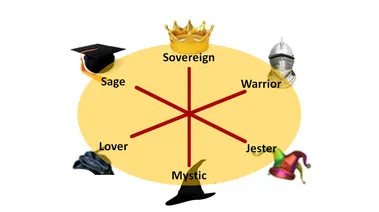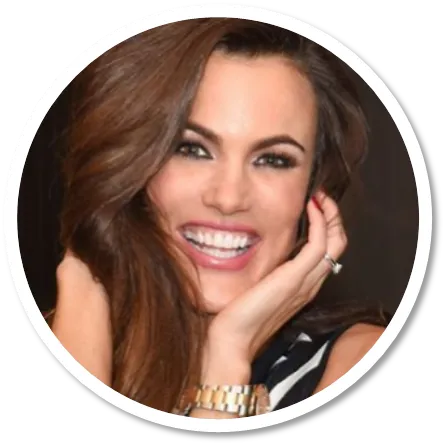See Our Latest Blogs
Lorem ipsum dolor sit amet, consectetur adipiscing elit. Integer ex dui, pellentesque sit amet mi et

The TEAM ME List of Archetypes
The TEAM ME List of Archetypes
Six of the Best? Aren't there more archetypes than these?
I’ve been asked many times why, when there are numerous archetypes that people have defined over the years, have I settled on only six... and why this specific six.
First I need to state that my primary intention is to improve performance and increase the effectiveness in my clients, so this orientation has played a major role in my selection of the archetypes I use.
Whilst I’ve gleaned a lot from a wide range of authors, I have learned much from Robert Moore and Douglas Gillette whose work centered around the four archetypes of: King, Warrior, Lover and Magician.
Remarkable as their insights are, I found myself innately suspicious of anything that attempts to classify the complex human condition into a mere 4 quadrants. As I explored these crucial archetypes I began to see that there was a missing piece between the ‘King’ and ‘Magician’. I believed that there was a separate archetype for the Mr Spock or Sherlock Holmes type that could not comfortably fit under either title. These highly intellectual characters never ventured into the realms of ‘magic’, but insisted upon the rational, the logical, the reasonable in all matters. From this I decided I needed to add the ‘Sage’ – present in many other archetypal lists or models.


Equally, I found there was too much of a stretch to push all kinds of attributes into what these gentlemen defined as the Lover. This was especially true regarding aspects of the arts and comedy. An observation of people in everyday life will quickly reveal that there are some people who are very ‘loving’ but aren’t very artistic at all. There are even those who are very ‘loving’ but have little sense of humour (less common, but I have at least one person in mind). And so I ensured that my model contained the Jester, at least – who completes the ‘right brain’ trio.
I fully acknowledge that I could sub-divide the 6 archetypes I use for my initial profiling but starting with something too complex is never a good idea, I believe, so I go with it as far as I can before any kind of subdivision is sought. When I do, I might introduce the Mother, the Innocent, the Shepherd, the Artisan and others, because I see that they all have some value.
It was only once I’d defined the six and started working with them that I began to realise there were 3 that were clearly the ‘left-brain’ types and 3 that were clearly the ‘right-brain’ types. After that I discovered that each had a clear opposite number in the alternate camp and identified exactly what forces caused an attraction between them.
I could add that the ‘Mystic’ is almost synonymous with the ‘Magician’ – though it depends upon whose definition you use.
I believe that every archetype, in its original form, has a certain nobility about it – that, at its core, it is a force for good, able to contribute something valuable to the world. That said, it is fully understood that under certain circumstances these archetypes can (and often do) choose to use their unique energies to force their way onto others – taking them into what we refer to as ‘shadow’ expressions.
So I need to clarify that what some people refer to as archetypes, I see merely as an aspect of a broader archetype. The Bully, for example, is simply a facet of an overheated (shadow) Warrior in the Team Me model. Equally, the Victim is the frozen shadow of the Warrior. Both of these are seen as sub-sets of the original, noble archetype - I do not see them as archetypes in their own right.
To label someone as one of these shadows immediately places them into a dangerous position of the individual identifying with that state and in a sense 'owning' their shadow state. Whilst some therapists seem to delight in stirring up an individual's darker sides, I simply use them as an indicator of the mature, positive, healthy archetypal role they've been given in life.
So, quickly back to Jung and Freud. These men did not define archetypes, they had been recognised at least since the time of Philo of Alexandria (10BC to 40AD) but they did make new distinctions as they saw common characteristics and patterns at an unconscious level.
I've learned much from many who have delved into the world of Archetypes and brought forth many valuable distinctions on their journeys, My commitment is to make this knowledge as accessible as possible, without diluting things too much, to the largest possible audience - so I'm sticking with the Team Me Six.
A Simple Model and Method that Delivers with Impact

Alexandra Prince
International Speaker & Success Coach

“Everyone should know this model - it’s incredible!
A most amazing tool to use with clients.”

Brian Tracy
World Renowned Business Author

“Wonderful - TEAM ME shows you how to unlock your full potential for success and
achievement.”

Adam C
Ultra-Marathon Runner

“Scarily accurate. That’s exactly how I approach life! Knowledge of these archetypes has been a total game changer for me.”
Unleash Your Business Brilliance.
Lorem ipsum dolor sit amet, consectetur adipiscing elit.
© 2025 Company Name - All Rights Reserved, consectetur adipiscing elit. Maecenas commodo suscipit tortor, vel tristique sapien


